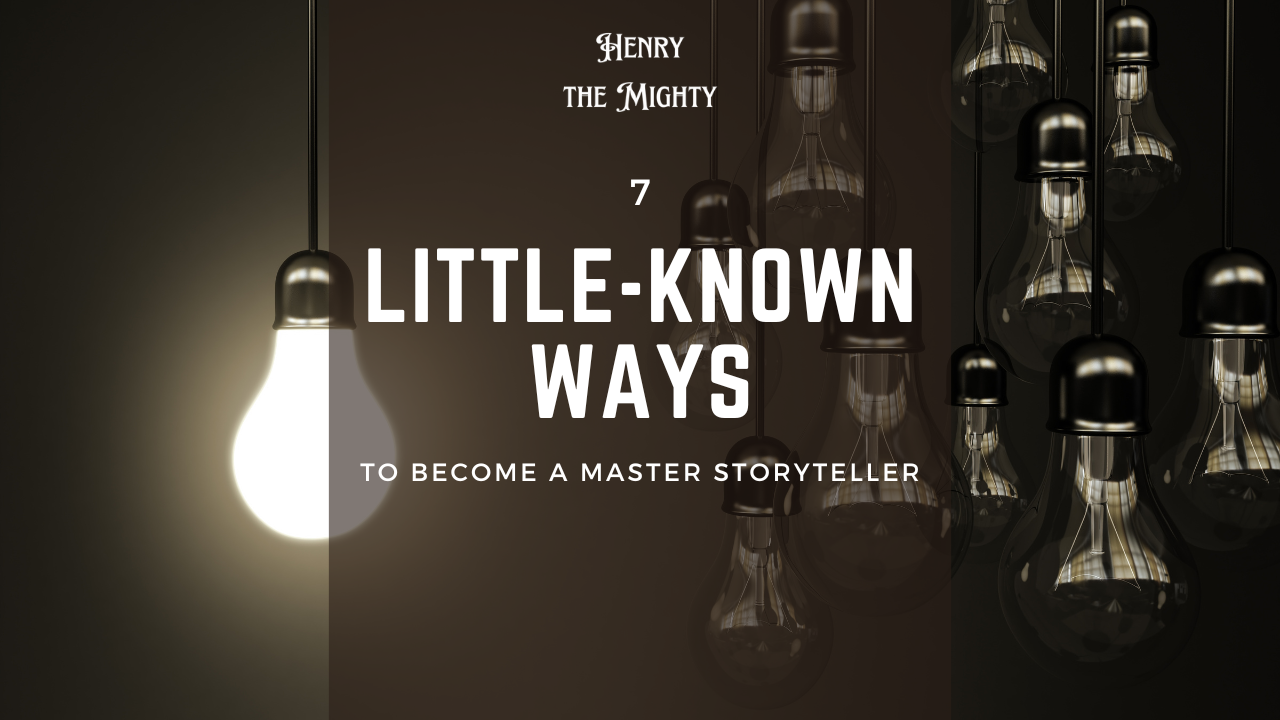
Italian version below ...
In a world saturated with content where the digital noise is getting higher every day, the ability to tell captivating stories sets you apart.
Here are 7 lesser-known techniques to elevate your storytelling prowess.
And remember: storytelling isn't just for fiction: entrepreneurs, copywriters, speaker... everyone needs it.
1: Embrace the Power of Silence.
Strategic pauses create suspense, allowing your audience to lean in and anticipate what's next. Don't rush; give your words space to breathe.
Don't overse it: pauses are strong when they are rare and sparse.
2: Show, Don't Just Tell.
It's a common but often overlooked advice. Instead of merely stating emotions, paint vivid pictures with your words. Describe the furrowed brow, the trembling hands, the catch in the throat.
They make the stories longer, it's true, but they also become more engaging.
3: Harness the Unexpected.
Subvert expectations and surprise your audience. Introduce plot twists, unexpected humor, or unconventional perspectives to keep them engaged.
While not mandatory, unpredictability is a great spice.
4: Master the Art of Pacing.
Vary the rhythm of your story. Alternate between fast-paced action and slower, introspective moments to create a dynamic flow.
Stories are like music: you need to control the rythim so you can control your audience reactions.
5: Infuse Your Story with Sensory Details.
Engage all five senses. Describe the aroma of freshly baked bread, the feel of cool raindrops, the sound of crackling fire.
As NLP teaches us, not everyone thinks in images: around 30% of people thinks in sounds and 10% in physical sensations.
6: Elicit Emotions Through Empathy.
Connect with your audience on a deeper level by tapping into universal human experiences. Make them laugh, cry, or feel a sense of wonder.
Stories are, at the end of the day, emotions sorrounded by facts.
7: Start strong and End with a Lingering Impact.
The human brain remembers beginnings and endings very well. So start strong by crafting a beginning and a conclusion that resonates long after the story ends.
Leave your audience with something to ponder, a question to consider, or a call to action.
🇮🇹 🇮🇹 🇮🇹 🇮🇹 🇮🇹 🇮🇹
Versione Italiana
🇮🇹 🇮🇹 🇮🇹 🇮🇹 🇮🇹 🇮🇹
In un mondo saturo di contenuti, dove il rumore digitale aumenta di giorno in giorno, la capacità di raccontare storie accattivanti ti contraddistingue.
Ecco 7 tecniche meno conosciute per migliorare la tua abilità di narratore.
E ricorda: lo storytelling non è solo per la narrativa: imprenditori, copywriter, speaker... tutti ne hanno bisogno.
1: Abbraccia il potere del silenzio.
Le pause strategiche creano suspense, permettendo al tuo pubblico di concentrarsi e anticipare il seguito. Non avere fretta, dai spazio alle tue parole per respirare.
Non esagerare: le pause sono forti quando sono rare e rade.
2: Mostra, non solo racconta.
È un consiglio comune ma spesso trascurato. Invece di limitarti a esprimere le emozioni, dipingi immagini vivide con le tue parole. Descrivi la fronte aggrottata, le mani tremanti, il groppo in gola.
È vero che le storie diventano più lunghe, ma anche più coinvolgenti.
3: Sfrutta l'inaspettato.
Sovverti le aspettative e sorprendi il tuo pubblico. Introduci colpi di scena, umorismo inaspettato o prospettive non convenzionali per tenerli impegnati.
Anche se non è obbligatorio, l'imprevedibilità è un ottimo condimento.
4: Padroneggia l'arte del ritmo.
Varia il ritmo della tua storia. Alterna l'azione frenetica a momenti più lenti e introspettivi per creare un flusso dinamico.
Le storie sono come la musica: devi controllare il ritmo per poter controllare le reazioni del pubblico.
5: Infondi la tua storia con dettagli sensoriali.
Coinvolgi tutti e cinque i sensi. Descrivi l'aroma del pane appena sfornato, la sensazione delle gocce di pioggia fresca, il suono del fuoco scoppiettante.
Come ci insegna la PNL, non tutti pensano per immagini: circa il 30% delle persone pensa per suoni e il 10% per sensazioni fisiche.
6: Sollecita le emozioni attraverso l'empatia.
Connettiti con il tuo pubblico a un livello più profondo attingendo alle esperienze umane universali. Falli ridere, piangere o provare un senso di meraviglia.
Le storie sono, in fin dei conti, emozioni circondate da fatti.
7: Inizia forte e termina con un impatto duraturo.
Il cervello umano ricorda molto bene gli inizi e i finali. Quindi inizia con forza creando un inizio e una conclusione che risuonino a lungo dopo la fine della storia.
Lascia al tuo pubblico qualcosa su cui riflettere, una domanda su cui riflettere o un invito all'azione.
Hello.
There is reasonable evidence that this article is machine-generated.
We would appreciate it if you could avoid publishing AI-generated content (full or partial texts, art, etc.).
Thank you.
Guide: AI-Generated Content = Not Original Content
If you believe this comment is in error, please contact us in #appeals in Discord.